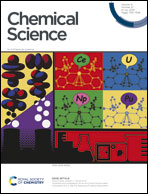Stereoselective alkyl C-glycosylation of glycosyl esters via anomeric C–O bond homolysis: efficient access to C-glycosyl amino acids and C-glycosyl peptides†
Abstract
C-Glycosyl peptides possess excellent metabolic stability and therapeutic properties and thus play critical roles in biological studies as well as drug discoveries. However, the limited accessibility of C-glycosyl amino acids has significantly hindered the broader research of their structural features and mode of action. Herein, for the first time we disclose a novel visible-light-driven radical conjugate addition of 1,4-dihydropyridine (DHP)-derived glycosyl esters with dehydroalanine derivatives, generating C-glycosyl amino acids and C-glycosyl peptides in good yields with excellent stereoselectivities. Redox-active glycosyl esters, as readily accessible and bench-stable radical precursors, could be easily converted to glycosyl radicals via anomeric C(sp3)–O bond homolysis under mild conditions. Importantly, the generality and practicality of this transformation were fully demonstrated in >40 examples including 2-dexosugars, oligosaccharides, oligopeptides, and complex drug molecules. Given its mild reaction conditions, robust sugar scope, and high anomeric control and diastereoselectivity, the method presented herein could find widespread utility in the preparation of C(sp3)-linked sugar-based peptidomimetics.



 Please wait while we load your content...
Please wait while we load your content...